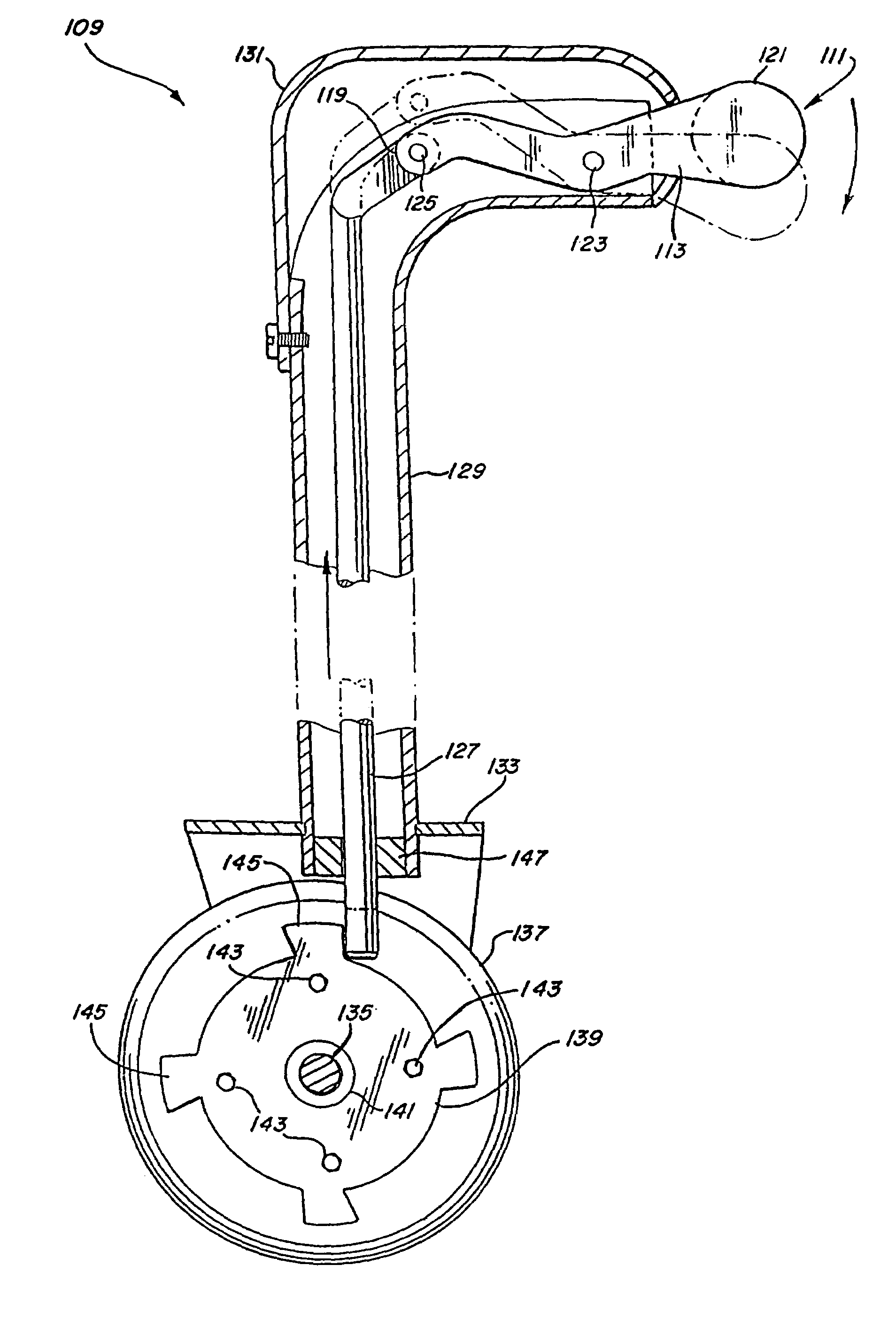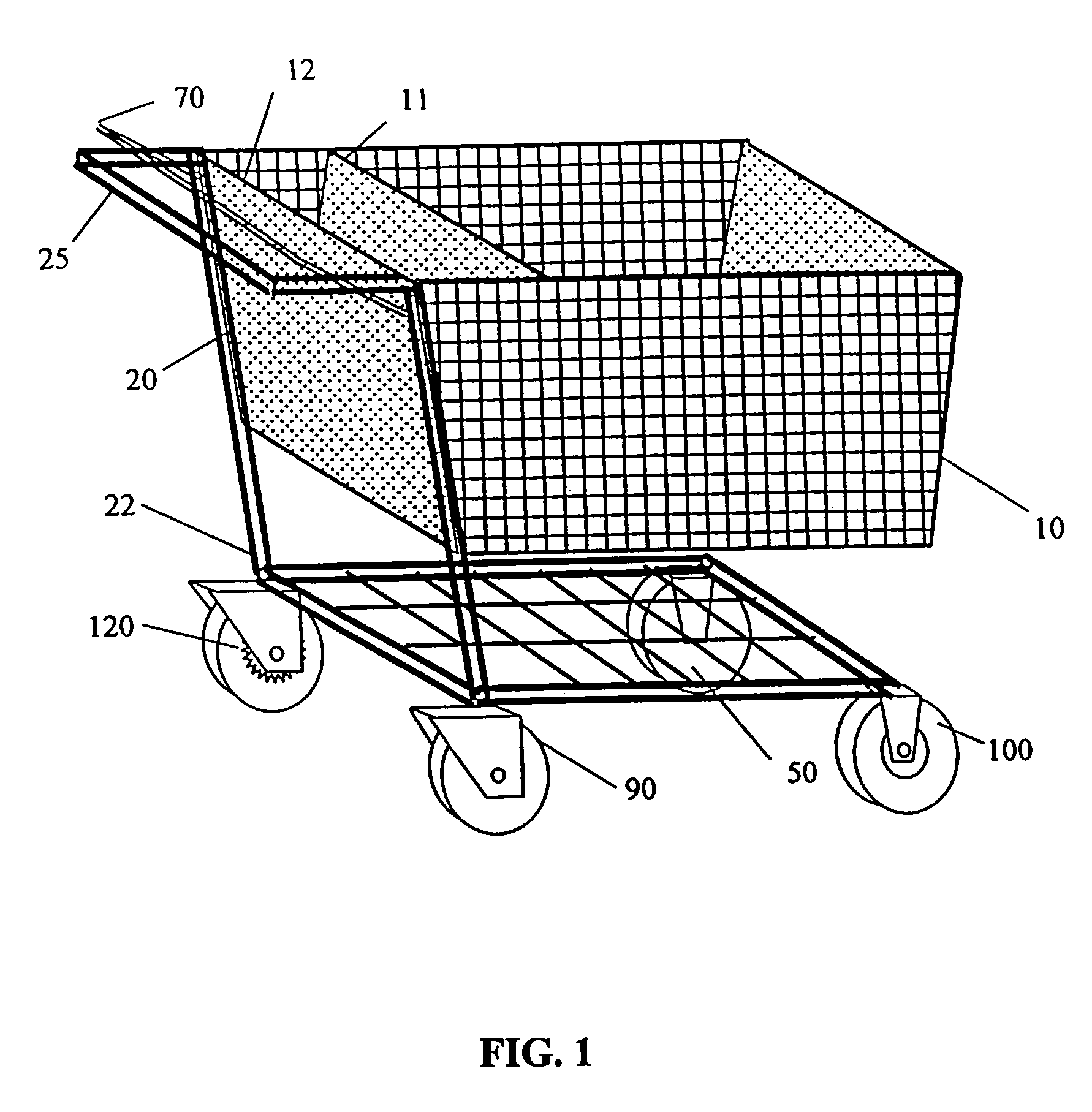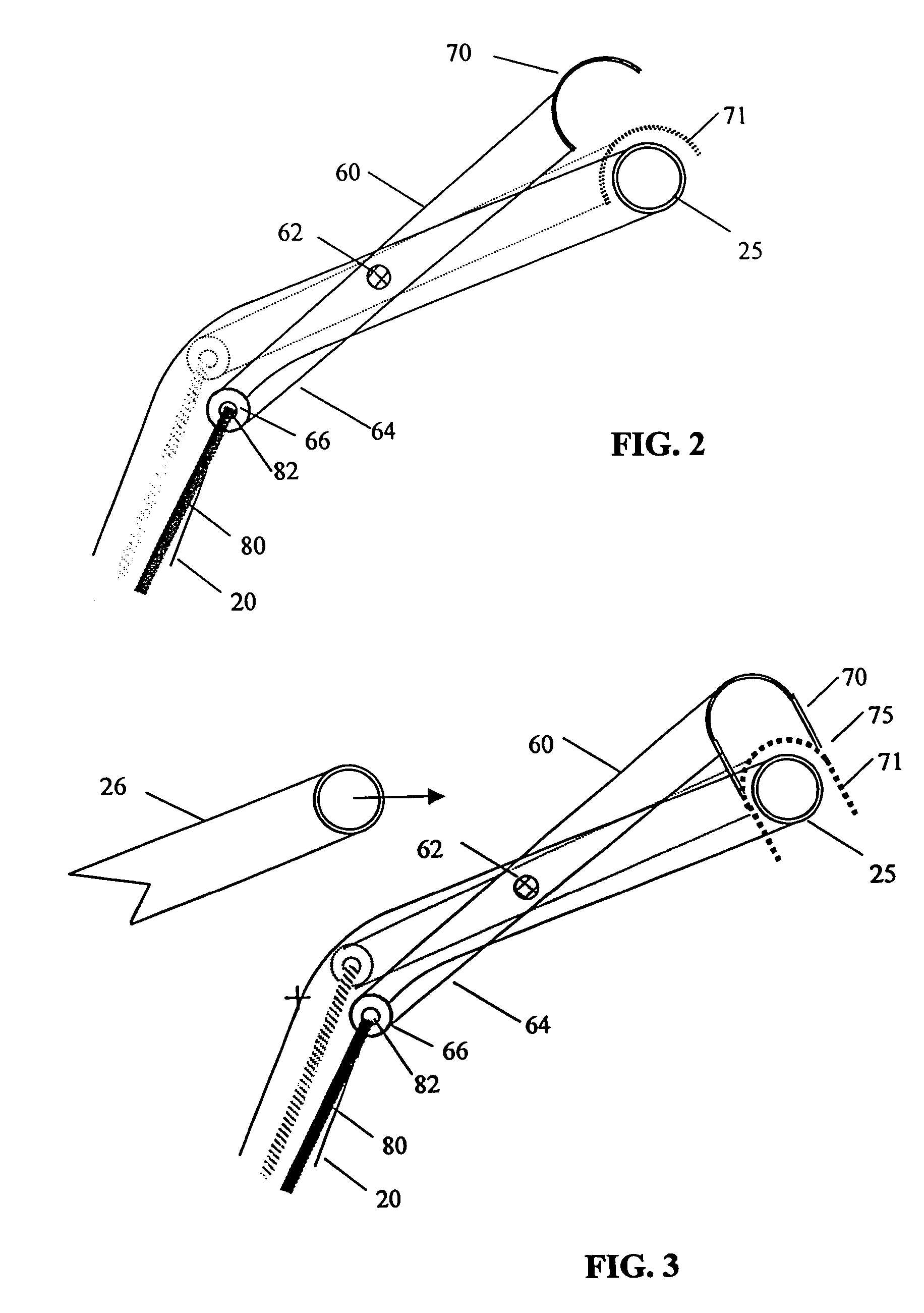Hand deactivated shopping cart automatic braking system
a shopping cart and automatic braking technology, applied in the field of braking systems, can solve the problems of reducing affecting the service life of the linking mechanism, and being subject to intentional or unintentional damage, so as to reduce the potential for damage, reduce the damage to the linking mechanism, and improve the disengagement mechanism
- Summary
- Abstract
- Description
- Claims
- Application Information
AI Technical Summary
Benefits of technology
Problems solved by technology
Method used
Image
Examples
Embodiment Construction
[0033]Refer first to FIG. 1 that represents an isometric view of an embodiment where the mechanism is shown on a shopping cart. The shopping cart of FIG. 1 includes a basket 10, a divider 11, a rear wall 12, a structural frame 20, vertical frame members 22, a handle 25, an undercarriage 50, an articulating handle 70, fixed rear wheels 90, front pivoting or turning wheels 100, and a braking mechanism including portion 120.
[0034]The basket 10 represents the area where a user may place items they wish to transport in the shopping cart. The shopping cart basket 10 can be made from a variety of materials including metal wire, metal tubing, expanded metal, molded plastics, or any other material that is capable of crating an open structure where items can be placed for transportation. The basket 10 may also be formed from a solid material that allows the basket 10 to hold liquid, granulated or powdered material. The material the basket 10 is made from may be coated, plated, or colored for ...
PUM
 Login to View More
Login to View More Abstract
Description
Claims
Application Information
 Login to View More
Login to View More - R&D Engineer
- R&D Manager
- IP Professional
- Industry Leading Data Capabilities
- Powerful AI technology
- Patent DNA Extraction
Browse by: Latest US Patents, China's latest patents, Technical Efficacy Thesaurus, Application Domain, Technology Topic, Popular Technical Reports.
© 2024 PatSnap. All rights reserved.Legal|Privacy policy|Modern Slavery Act Transparency Statement|Sitemap|About US| Contact US: help@patsnap.com










